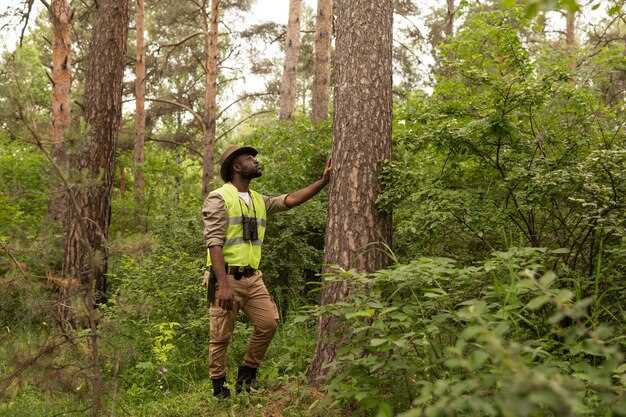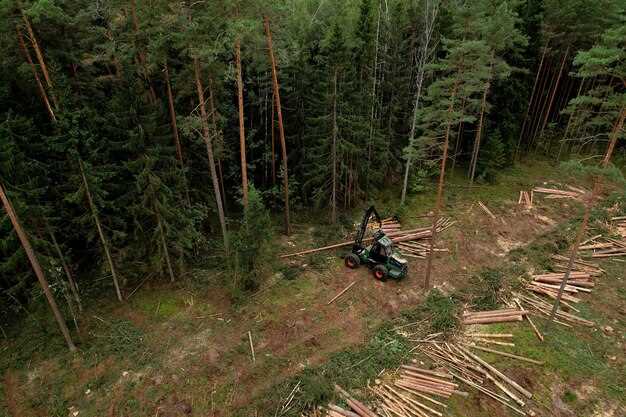
Hunting in diverse environments, such as dense forests and open fields, requires a keen understanding of the different strategies that maximize success. The contrasting nature of these habitats not only influences wildlife behavior but also shapes how hunters should plan their approaches. In dense forests, where cover is abundant, hunters must adapt their tactics to navigate through thick underbrush and utilize the natural landscape to conceal their movements.
In these forested areas, understanding the angle of shots is crucial. The limited visibility and unpredictable terrain demand precise shooting skills and an awareness of how sound travels through varied foliage. Hunters often rely on calls and scents to lure animals into open spaces or closer to their positions. The use of cover becomes essential to remain undetected while stalking prey, making knowledge of animal patterns and habitat features vital elements for a successful hunt.
In contrast, the wide expanses of open fields present hunters with different challenges and opportunities. Visibility is typically greater, allowing for long-range shots, but the absence of cover can make hunters vulnerable. Here, strategy shifts toward utilizing natural formations such as hills and tree lines to shield movement. Understanding how animals use these areas for shelter and feeding is key to predicting their movements and determining optimal points for ambush.
Both environments require hunters to master the art of patience and observation. Whether maneuvering stealthily through a forest or positioning for a clear shot in a field, each approach is guided by an awareness of how to use the landscape to one’s advantage. Overall, successful hunting in these varied terrains hinges on skillful adaptation to the unique circumstances presented by each habitat.
Maximizing Shot Angles for Successful Hunts

In the pursuit of game animals, understanding the environment is crucial. Dense forests and open fields present distinct challenges and opportunities in terms of shot angles. Maximizing shot angles can dramatically influence the outcome of a hunt, making it essential for hunters to adapt their strategies based on the terrain.
In dense forests, the cover offered by trees and underbrush can limit visibility and restrict shot angles. Hunters should position themselves strategically to utilize natural clearings or trails frequently used by animals. Recognizing the optimal shooting angle is vital; shots taken from an elevated position or around obstacles can enhance accuracy while ensuring safety. When aiming, it’s crucial to account for the trajectory and distance, as the dense foliage may disrupt bullet paths.
Conversely, open fields provide broader visibility and more direct lines of sight. However, this openness can also expose hunters to game animals. To maximize shot angles in these areas, hunters should utilize natural features such as hills or dips for cover. The geometry of the landscape allows for more calculated shot placements. Anticipating animal movement and positioning oneself at suitable angles ensures a higher probability of a successful shot.
Regardless of the environment, the key to maximizing shot angles lies in patience and observation. Understanding animal behavior and movement patterns allows hunters to select the most favorable positions. Practicing shooting at various angles, both from different elevations and terrains, can enhance proficiency and preparedness for real hunting scenarios.
Lastly, safety should always be a priority. Hunters must be aware of their surroundings and ensure the direction of their shot is free of obstructions or potential hazards. By mastering shot angles and combining them with keen environmental awareness, hunters can significantly increase their chances of a successful hunt.
Adapting Techniques to Varying Forest Cover

When hunting in environments with diverse forest cover, it is essential to adjust techniques to optimize success. Dense forests present unique challenges, such as limited visibility and reduced mobility. In these settings, hunters must focus on utilizing the natural cover for stealth. Approaching from downwind is crucial to avoid detection by the game, and moving slowly can help reduce noise. Utilizing the thick underbrush can create effective ambush points, allowing hunters to carefully choose their shot angle when an opportunity arises.
In contrast, open fields require a different strategy. The visibility is significantly enhanced, and animals have a wider sight range. Here, hunters should incorporate long-range optics to ensure accurate shooting from a distance. The use of natural cover, such as bushes or trees at the edge of the field, can provide necessary concealment while waiting for the right moment to take a shot. Angling the position toward the approaching game is vital, as it allows for a clear line for the shot, enhancing precision.
Regardless of the type of terrain, understanding the behavior patterns of the game is crucial. In denser areas, animals tend to move along established paths where the cover is thicker. Paying attention to these trails improves the chances of a successful hunt. On the other hand, open fields often see bigger movements during dawn and dusk, necessitating time management to be in position before the animals arrive.
In summary, adapting hunting techniques to varying forest cover involves a strategic approach that considers both the environment and animal behavior. By leveraging cover and adjusting shot angles accordingly, hunters can improve their effectiveness in both denser woods and wide-open spaces.
Navigating and Hunting in Open Fields
Navigating open fields presents unique challenges and opportunities for hunters. Unlike dense forests that provide natural cover and concealment, open landscapes require hunters to adopt different strategies to succeed. The absence of trees and underbrush means that stealth is key. Understanding wind direction, terrain features, and animal behavior becomes essential for an effective hunting experience.
When hunting in open fields, the ability to remain undetected is crucial. The expansive view provides limited hiding spots, making hunters vulnerable to being spotted by both prey and other humans. Utilizing natural elements like tall grasses, hills, or any slight dips in the terrain can provide necessary cover. Finding these features allows hunters to approach their target with greater stealth.
Effective shot placement is determined by multiple factors in open areas. Distances can be deceiving without clear markers, so practicing with a rangefinder is advisable. Understanding the behavior of the game species in such environments is also vital; knowing their feeding patterns and preferred paths can significantly increase the likelihood of a successful shot.
A strategic approach involves scouting the area beforehand to identify high-traffic zones where animals may move. Using tools such as maps and GPS devices can aid in navigation, ensuring hunters remain aware of their surroundings. Careful planning of entry and exit points minimizes the risk of spooking animals, allowing for a more calculated approach during the hunt.
In conclusion, mastering the art of navigation and hunting in open fields requires a combination of stealth, knowledge of the environment, and strategic planning. By integrating these elements effectively, hunters can enhance their chances of success in the wide-open spaces, turning challenges into opportunities for achievement.



